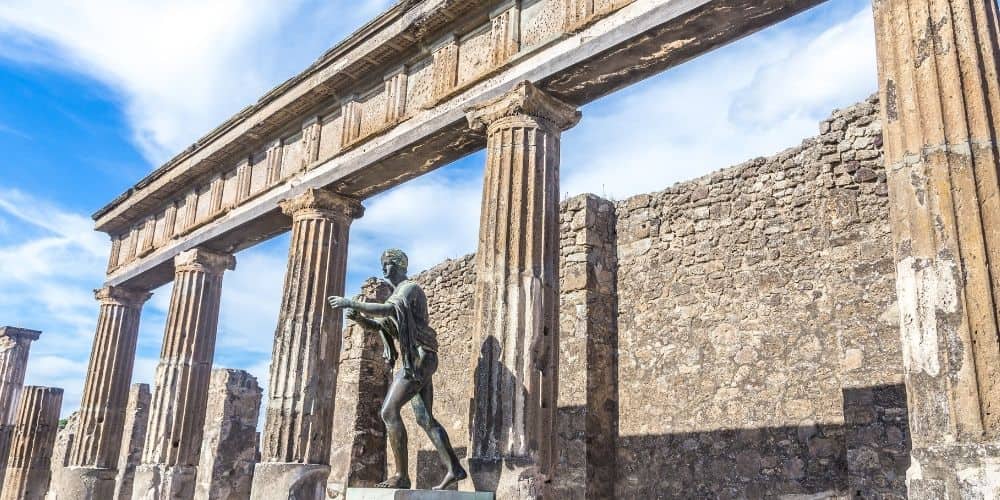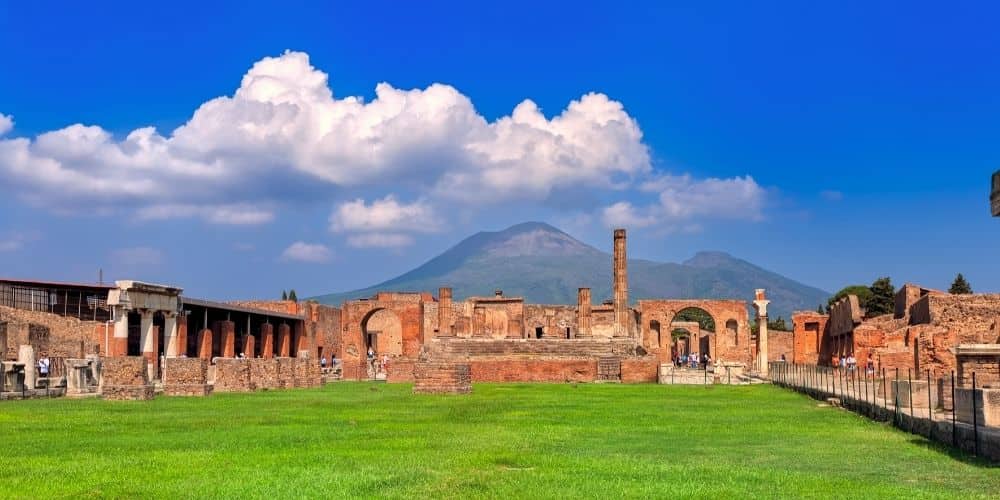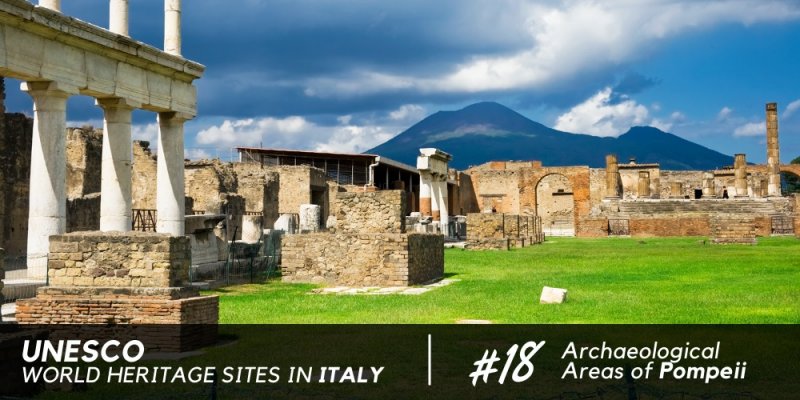Pompeii, the ancient city buried by Vesuvius
The ancient Osca, then Etruscan and finally the Roman city of Pompeii is certainly a wonder of history, art, and culture universally known throughout the world.
About this place, today perfectly preserved especially because of the eruption of Vesuvius in 79 AD has been written almost everything, but not only.
It is a place that has fascinated great protagonists of the painting of all time as Picasso, De Chirico, Moreau, Ingres, and many others. Excellent artists of Cinema and Literature from all over the world have also paid homage to Pompeii, identifying themselves with the terrible catastrophe experienced by Pliny the Elder and accurately recounted by his nephew Gaius Caecilius, known as Pliny the Younger. This destructive event had a huge impact on the history of the time with great economic aid promoted directly by Emperor Titus to rescue and help the local population, physically and mentally compromised.
Today Pompeii is the ideal place to retrace that history, watching Vesuvius, powerful, silent, and lush get lost among those ancient ruins, including treasures and architecture emphasizing the invincible superiority of nature. A place that for these reasons has become part of the list of UNESCO World Heritage since 1997.

The architecture and archaeology of a priceless Unesco heritage site

The archaeological excavations discovered by chance in the first half of the eighteenth century and then executed with great care since 1748 have always attracted scholars, archaeologists, and curious people from all over the world.
Great was the wonder for the discovery of an ancient city that remained "captured" in the ashes almost like a sculptural photograph, which today is shown to us as if nothing had ever changed. In 1860, three-fifths of the city had already been brought to light with everything that the architecture and civil engineering of ancient Rome had managed to do.
Thus, sections of walls and several entrance gates reappeared, the perfect and regular plan of the city divided into numbered insulae. And then again: the great forum that represented the center of social and public life; the large and small theater that show us the relationship of the people with culture and drama; the immense amphitheater where battles and gladiator shows took place; the temples of Jupiter, Isis, Apollo that show us the sacred side of life before the advent of Christianity, the ancient baths, the lupanar (ancient red light districts) or Thermopolis (places of refreshment where you could buy food ready for consumption, similar to today's street food).
Then at the beginning of the twentieth century, around 1909 and 1910 was discovered the famous "Villa of the Mysteries", a suburban building far from the center, at that time not too far from the sea: it is a villa d'otium with large painted rooms and huge hanging gardens. The Villa then became very important from the historical and artistic point of view for its extraordinary paintings made of female characters painted life-size (megalographia) with scenes of rituals, still objects of studies.
In the '50s then, there was another important excavation campaign that brought to light the entire area of the necropolis, even earlier than the Roman era, with several Samnite findings, proving that the area was already known for its fertility.
In short, from whatever point of view you want to look at Pompeii you always have the feeling that it can enrich us. Pompeii is a place of science, art, history, architecture, archaeology, culture, and much more. One of the heritages of humanity that should be visited at least once in a lifetime.
Pompeii and Vesuvius, the dramatic event become a legend

As you probably know the city of Pompeii in ancient times was not too far from the sea (the coast today is much further away) and was situated on a bay at the foot of Vesuvius.
The latter was seen as a faithful friend, with the inhabitants of the city who did not fear its eruption (which took place for the record over 800 years before, so there was little knowledge of the danger of the place).
It was August 24, 79 AD (conventional date and widely disputed overtime) when a frightening rain of ash and lapilli covered entirely and suddenly the city. In very few hours the over 20 thousand inhabitants were surprised by an inferno of fire that forced them to panic and death.
Of these it is estimated that about 18 thousand could not save themselves, remaining stunned and helpless in front of what was happening.
After three days, when the eruptive force of the volcano began to diminish, the city was already almost totally buried and the coastline was changed to the point that the rescuers who arrived could not recognize exactly the position of the city. A catastrophic event that marks the beginning of a legend hidden for over 17 centuries, until a farmer in the eighteenth century, spading his vineyard realized that under his feet was hidden an incredible, extraordinary, and priceless treasure.
About the author
Written on 28/06/2021




Emanuele Castellano
The ancient Osca, then Etruscan and finally the Roman city of Pompeii is certainly a wonder of history, art, and culture universally known throughout the world.